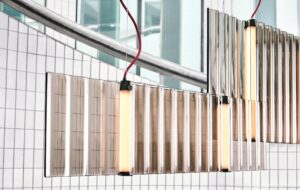|
An exhibition of the objects that get famous designers’ creative juices flowing featured everything from ear muffs to pencil sharpeners It is often said that all design starts with a blank page. Source Material, a show curated by Jasper Morrison, Jonathan Olivare, and Marco Velardi at the Kaleidoscope Project Space in Milan this year argued something different by gathering objects, keepsakes and references from 54 creative minds and presenting them as “stepping stones for the creative process”. The selected artefacts range from the extremely literal, such as tools or raw materials that serve as the physical means through which an idea becomes real, to the more abstract and subtle, such as an old magazine or parts of a musical instrument. Source Material served as a reminder that design arises from the everyday as well as in the mind of the creator. Here, six of the featured designers explain their selection. 1. Konstantin Grcic This is a pair of earmuffs, the kind for keeping noise out. The Brits call them quiet muffs. Funny phrase. I bought them when I started my apprenticeship as a cabinet maker in Dorset in 1985. In other words, they go back to the very beginning, to when I started making furniture 30 years ago. At the time, I wore them almost every day, working on the circular saw or my Elu Mof 96 router. I had to fix them once—the connections between the ear cups and the plastic brace had broken off. There are two zinc-plated screws now. I don’t get to make things any more. Still, I have kept them all these years, just in case. 2. David Chipperfield I have been collecting bowls for more than 20 years. This was the first one I bought, in a small shop in Kyoto. I collect bowls because they demonstrate a simple human impulse to hold food, which hasn’t changed in thousands of years and is common to all cultures. This bowl is larger than most handheld bowls. It is also unusual in that it is wooden and carved. The split in the wood has been stapled and this makes it more beautiful of course. I love the variation that can be found within the limits of a noble typology. This is of course relevant to all design tasks, from bowls to buildings. 3. Keersten Geers and David Van Severen, Office Architects This piece of aluminum, with its bizarre materiality – being polished on one side to the point of being almost immaterial, and at the same time having a sharpness to it – represents a fascination we have in working with metals. Any material you use has a falseness to it; whatever you do with it, there is a certain mise-en-scène. In our work, this illusion is extremely important. This is why we’re always moving back to these very simple materials, which are not necessarily honest. The raw materiality of this piece of aluminum offers a kind of sensuality through its simplicity: in it, spartanism and hedonism can coincide. 4. Erwan Bouroullec When I was a child, I was very attracted to my mother’s sewing machine; however, lacking the skills to adjust its settings with precision, I did not have the right to use it. Later, when I started to live alone, the first machine I bought was a simple sewing machine that I found in a thrift shop. Since then, I’ve bought four more sewing machines, which broke one after the other. These types of machines are directional and perform just one or two operations. This simplicity, which could be considered a limitation, turns each solution into a general or even universal matter. 5. Thomas Demand Pencil sharpeners are designated for desks, and this example in particular can be clamped onto a tabletop, so it can withstand the raw force of a frustrated writer. Handwriting seems on the way out, and maybe so is the habitat in which this object could be found: a desk, paper, scissors, tape. I love desks and have repeatedly incorporated scenarios of that kind into my work. But desks have become laps, and notes are spoken into a device and read out by a woman’s voice in an accent one can choose to one’s taste. So the pencil sharpener is an object from the past of a near future, and that’s what makes it an inspiration. 6. Inga Sempé This leather wallet with accordion compartments was a French staple sold for around 30 francs in street markets. I was always fascinated by this wallet as it was so handy and nicely made. It could be flat when almost empty, and become as fat as an American when full of coins. The coins could be separated from banknotes and other papers within the different compartments, and more precious things could be held in the two smallest pockets closed by snaps. On its back, a small pocket was ideal for storing subway tickets. |
Words Owen Pritchard |
|
|
















